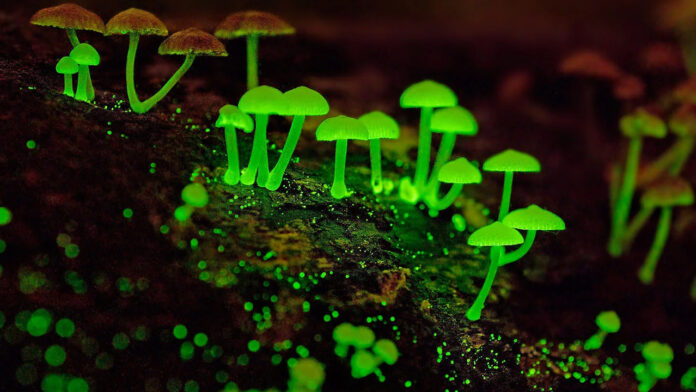Delve into the captivating world of bioluminescent mushrooms, where nature’s magic comes to life in the form of glowing fungi. In this article, we unravel 10 fascinating facts about these enchanting organisms, exploring the mysteries and wonders that make bioluminescent mushrooms a unique and awe-inspiring phenomenon.
A Natural Light Show
Bioluminescent mushrooms are nature’s living lanterns, emitting a soft and mesmerizing glow. This phenomenon turns the forest floor into a magical spectacle, creating an enchanting atmosphere in the darkness.
Chemical Alchemy of Light
The luminescence in bioluminescent mushrooms is a result of a chemical reaction involving luciferin, oxygen, and an enzyme called luciferase. This process creates light without heat, giving the mushrooms their distinctive glow.
Global Distribution
Bioluminescent mushrooms can be found in various parts of the world, from dense forests to tropical regions. Notable species include the ghost fungus in Australia and the Mycena lux-coeli in North America.
Purpose of Illumination
While the exact purpose of bioluminescence in mushrooms is not fully understood, scientists believe it may play a role in attracting nocturnal insects. Some hypothesize that the glow could aid in spore dispersal or act as a deterrent for herbivores.
Edible or Toxic?
Not all bioluminescent mushrooms are safe to eat, and many are considered toxic. The presence of toxins, such as hallucinogenic compounds, in some luminescent species highlights the importance of caution when foraging for wild mushrooms.
Evolutionary Mystery
The evolutionary purpose of bioluminescence in mushrooms remains a mystery. While some theories suggest it may be a byproduct of other metabolic processes, the specific adaptive advantage of glowing in the dark is still a subject of scientific investigation.
Nighttime Delight
Bioluminescent mushrooms are most visible during the night, creating an ethereal ambiance in natural settings. Observing these mushrooms in their natural habitat during nocturnal hikes or nature walks is a unique and magical experience.
The Role of Fungi in Ecosystems
Beyond their enchanting glow, mushrooms, including bioluminescent varieties, play crucial roles in ecosystems. They contribute to nutrient cycling, mycorrhizal partnerships with plants, and the decomposition of organic matter.
Cultural Significance
Bioluminescent mushrooms have found their way into folklore and cultural narratives. In some traditions, they are associated with magical realms and enchanted forests, adding a touch of mysticism to their already captivating allure.
Conservation Concerns
Despite their magical appearance, bioluminescent mushrooms face threats from habitat loss, climate change, and overharvesting. Conservation efforts are essential to preserving these natural wonders and the delicate ecosystems they inhabit.
In conclusion, bioluminescent mushrooms stand as a testament to the marvels of the natural world. Their soft glow, mysterious chemistry, and ecological importance make them a captivating subject for both scientists and nature enthusiasts alike. These 10 fascinating facts offer a glimpse into the enchanting realm of nature’s living lanterns.

